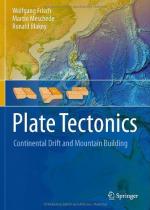|
This section contains 630 words (approx. 3 pages at 300 words per page) |

|
In terms of plate tectonics, collision boundaries are sites where lithospheric plates move together and the resulting compression causes either subduction (where one or both lithospheric plates are driven down and destroyed in the molten mantle) or crustal uplifting that results in orogeny (mountain building).
Colliding plates create tremendous force. Although lithospheric plates move very slowly (low velocities of inches per each), the plates have tremendous mass. Accordingly, at collision, each lithospheric plate carries tremendous momentum (the mathematical product of velocity and mass) that provides the energy to cause subduction or uplifting. In addition, the buoyancy properties of the colliding lithospheric plates determine the outcome of the particular collision. Oceanic crust is denser than continental crust and is subductable. Continental crust, composed of lighter, less dense materials, is too light to undergo subduction and so overrides oceanic crust or uplifts.
Earth's crust is fractured...
|
This section contains 630 words (approx. 3 pages at 300 words per page) |

|


